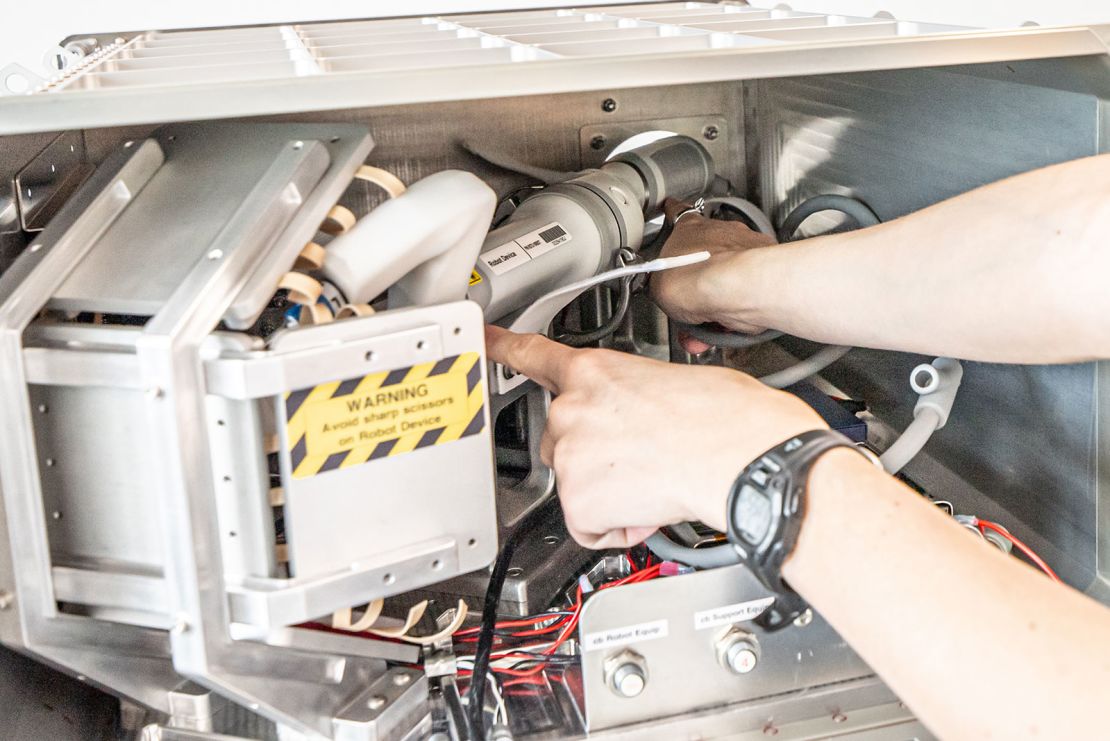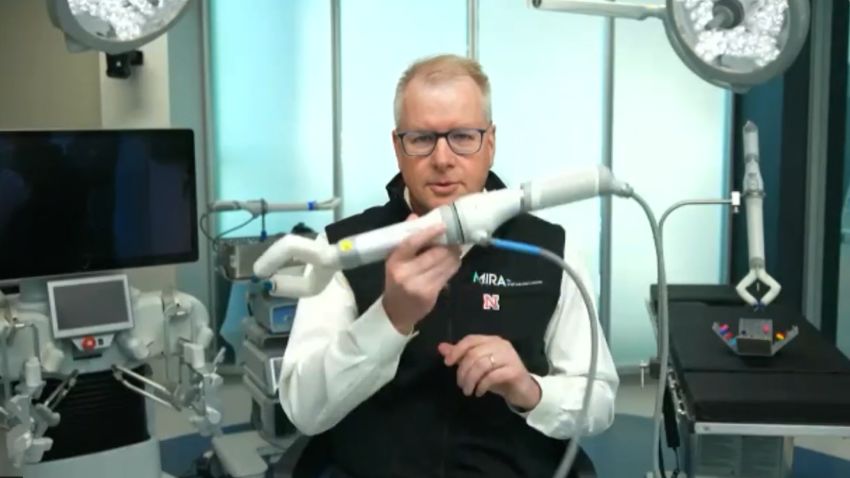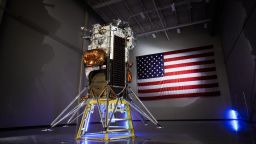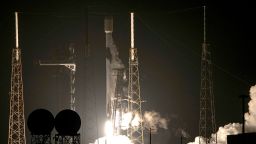Sign up for CNN’s Wonder Theory science newsletter. Explore the universe with news on fascinating discoveries, scientific advancements and more.
A tiny surgical robot in residence at the International Space Station completed its first surgery demo in zero gravity on Saturday, developers of the technology exclusively told CNN.
The robot, known as spaceMIRA — which stands for Miniaturized In Vivo Robotic Assistant — performed several operations on simulated tissue at the orbiting laboratory while remotely operated by surgeons from approximately 250 miles (400 kilometers) below in Lincoln, Nebraska.
The milestone is a step forward in developing technology that could have implications not just for successful long-term human space travel, where surgical emergencies could happen, but also for establishing access to medical care in remote areas on Earth.
The US goal of pushing exploration deeper into space includes the possibility of journeys that could take years — a round-trip to Mars could take about two years to complete, according to NASA.
A robotic tool built for space
The robot is only 2 pounds (0.9 kilogram), and its compact microwave-size design makes it a lightweight instrument fit for space travel. With a portion of the device inserted into the body to perform surgery, the tool uses two arms to mimic the movements of a human — the left arm to grasp and right arm to cut, said Shane Farritor, cofounder and chief technology officer at Virtual Incision, the startup that created spaceMIRA.

“It gives smaller hands and eyes to the surgeon (on Earth) and allows them to perform a lot of procedures minimally invasively,” Farritor said, who has been helping to develop the technology for 20 years.
SpaceMIRA hitched a ride on a SpaceX Falcon 9 rocket on January 30 from Florida’s Cape Canaveral Space Force Station and arrived at the space station on February 1.
How the surgical robot demo played out
The demonstration on Saturday called for the remote surgeon to control the robots’ hands to provide tension to the simulated tissue — made of rubber bands — and use the other hand to dissect the elastic tissue with scissors, Farritor said. A total of six surgeons performed remote tests with the robot, and each demonstration — dissecting the correct piece of tissue under pressure, a common surgical task, Farritor said — was deemed successful.
One of the challenges when attempting to control a robot in space from Earth is latency, or the time delay between when the command is sent and the robot receives it. The delay was about 0.85 of a second, said Dr. Michael Jobst, a colorectal surgeon who was part of the demonstration with spaceMIRA on Saturday.
“In a live patient, if there is bleeding, it’s my job to stop that bleeding immediately. But to have an 800 to 850 millisecond lag between seeing the blood loss and then doing something about it, I mean, effectively that’s like… saying, OK, one Mississippi, two, and then I get to go ahead and fix the problem,” said Jobst, who was one of the first surgeons to use the terrestrial MIRA on humans in clinical studies. He said he has performed a total of 15 operations on human patients with the terrestrial version of MIRA, which is an investigational device not available for sale.
“Five seconds would be an eternity in surgery, and a split second or a half a second is going to be significant. So, this was a big challenge,” Jobst said. Even with the noticeable time delay, the surgeons succeeded in completing the tasks, he said.
SpaceMIRA is set to return to Earth in the spring.
“NASA wants to go further, and the long duration spaceflight will place new demands on medical care in a lot of ways,” said Farritor, who is also a professor of mechanical engineering at the University of Nebraska. “There’s a lot of questions that have yet to be answered here. … We just wanted to show what’s possible, and we think it’s a really good step in the right direction.”
Telesurgery provides access to care
The findings from MIRA are also valuable for expanding surgical options on Earth, such as in rural areas or military battlefields, according to a news release from the University of Nebraska.
“There are a lot of places in the US … that don’t have access to specialists, and if you could perform telesurgery like this, where you could have an expert dial in from a larger city into a rural area and assist with some surgical care, I think that’s got huge advantages,” Farritor said.
SpaceMIRA is 3 inches (7.6 centimeters) shorter than a counterpart designed for use on Earth to accommodate spaceflight constraints, but it has the same form and function, he said.
Correction: A previous version of this story misstated the nature of Jobst's operations using terrestrial MIRA.







